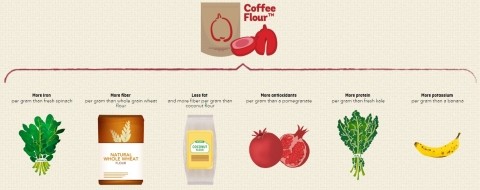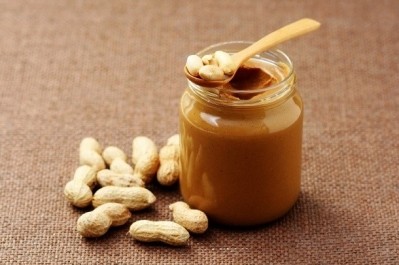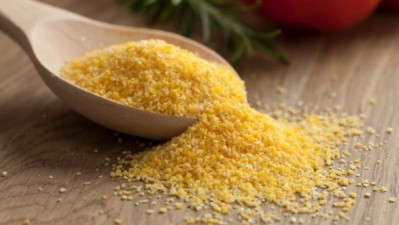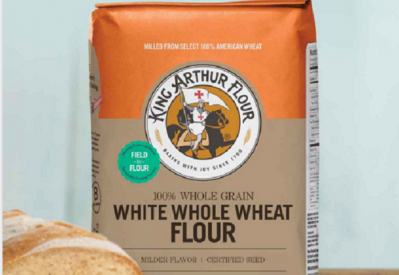CoffeeFlour expands as demand for novelty and sustainability increases
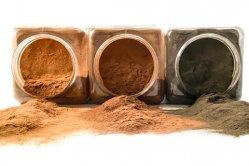
Two years ago, when the company was only two years of age, CoffeeFlour founder Dan Belliveau told FoodNavigator-USA that his company was “finally beyond the stage where people just call us crazy.”
Today, the company has seen significant growth. Among other things, its ingredient has been featured in the top-selling item at Bagel & Bagel, one of Japan’s largest bagel chains, and shortly after was used in a new artisanal pizza joint called No. 4 Café for the restaurant’s Margherita Pizza, Mushroom Pizza, cornmeal muffin, and cinnamon bun.
Beyond the foodservice channel, the ingredient is also used in several up-and-coming products, such as the “Energized Hot Cereal” by Earnest Eats and in the “Arabica Cherry Espresso” artisanal chocolate bar by Jcoco chocolate.
“As an ingredient brand, our sales focus has been primarily B2B,” Belliveau, a former Frito-Lay and Starbucks exec, told FoodNavigator-USA. “The scale of partnering with brands and businesses allows us to better achieve our mission of reducing the amount of waste that normally results in green coffee production.”
It’s the environmental impact that counts
While an increase of all-purpose flour alternatives has been attributed to popular demand of gluten-free products, CoffeeFlour’s inception was driven more by a desire to decrease waste than to cater to changing eating habits.
“Our priority at CoffeeFlour is ensuring that we can continue to make a significant impact on waste reduction in this industry so that the environmental, social, and economic benefits of CoffeeFlour are as widespread as possible,” Belliveau said.
For coffee, only the seeds are needed while the fruit itself, almost half the biomass of the coffee cherry, is thrown away. The discarded fruit, called pulp, can contaminate water wastage systems, which is an even bigger problem for developing, coffee-producing countries such as Nicaragua, Guatemala, and Vietnam.
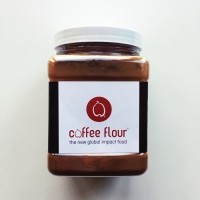
There hasn’t been an accurate method yet developed to track how much pulp waste has been reduced in coffee production since CoffeeFlour’s establishment, but there are other ways to measure, he said: “We do have an early example where at one of the mills in Nicaragua we have reduced the pulp waste pile by 75-80%.
"We have dried approximately 1 million pounds at that one mill, which would equate to 4 million pounds of wet waste placed in the big pile,” he added.
Education and awareness
“So far the only challenge we’ve really encountered is making sure that we are providing enough education to go along with our product,” Belliveau said about marketing the relatively novel product. It's not easy to translate a wheat-flour recipe to use coffee flour, so the company has been experimenting and developing recipes in their Seattle lab.
The company's website touts coffee flour as a more nutrient-dense alternative to traditional wheat flour with more iron, fiber, and antioxidants, among other things. When it comes to taste, the company describes it to be nothing like coffee, but floral and citrus instead.
Inevitably paired with building brand awareness is also creating awareness around the ingredient’s sustainability goals. Chef Dan Barber of Blue Hill used CoffeeFlour in desserts featured at his Landfill Lunch, where “world leaders dined on trash,” at the United Nations Sustainable Development Summit in 2015.
Another event was the TED2016: Dream conference in Vancouver. Attendees sampled soba noodles, rainforest crackers, and a granola parfait—all made with CoffeFlour. The brand’s presence at the event was to provide “an unvarnished look at our food production systems and imagine a profoundly more sustainable, climate resilient future."
“We’ve [been] quite strategic with all our partnerships (events, NGOs, sales),” Belliveau said. “[We made] sure that they were strategically aligned with our sustainability mission and they were influencers in food and sustainability.”

